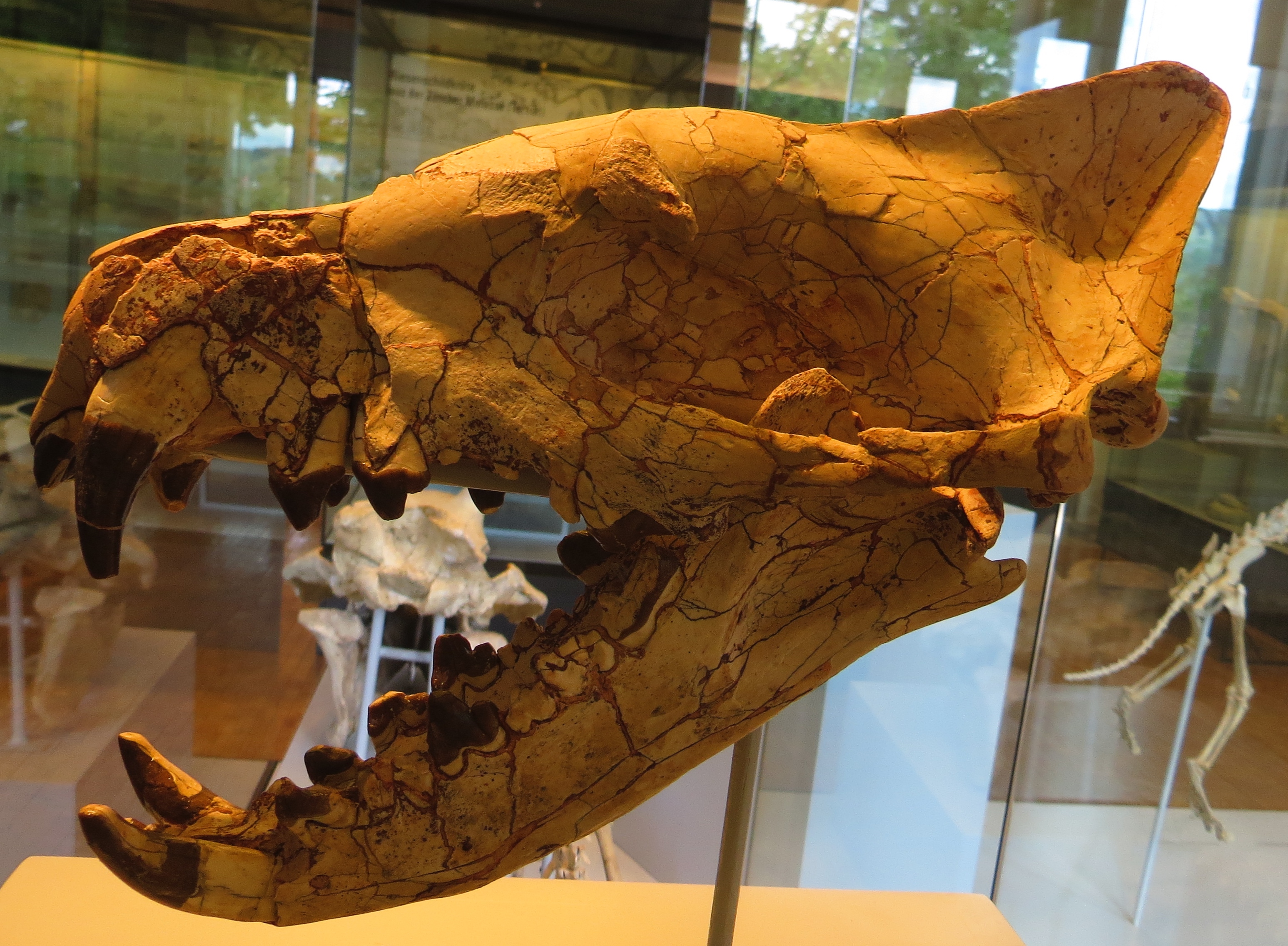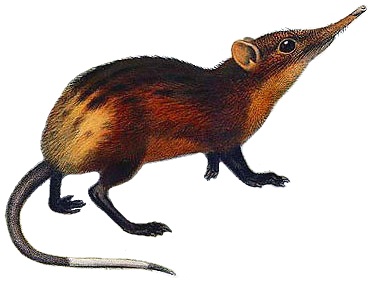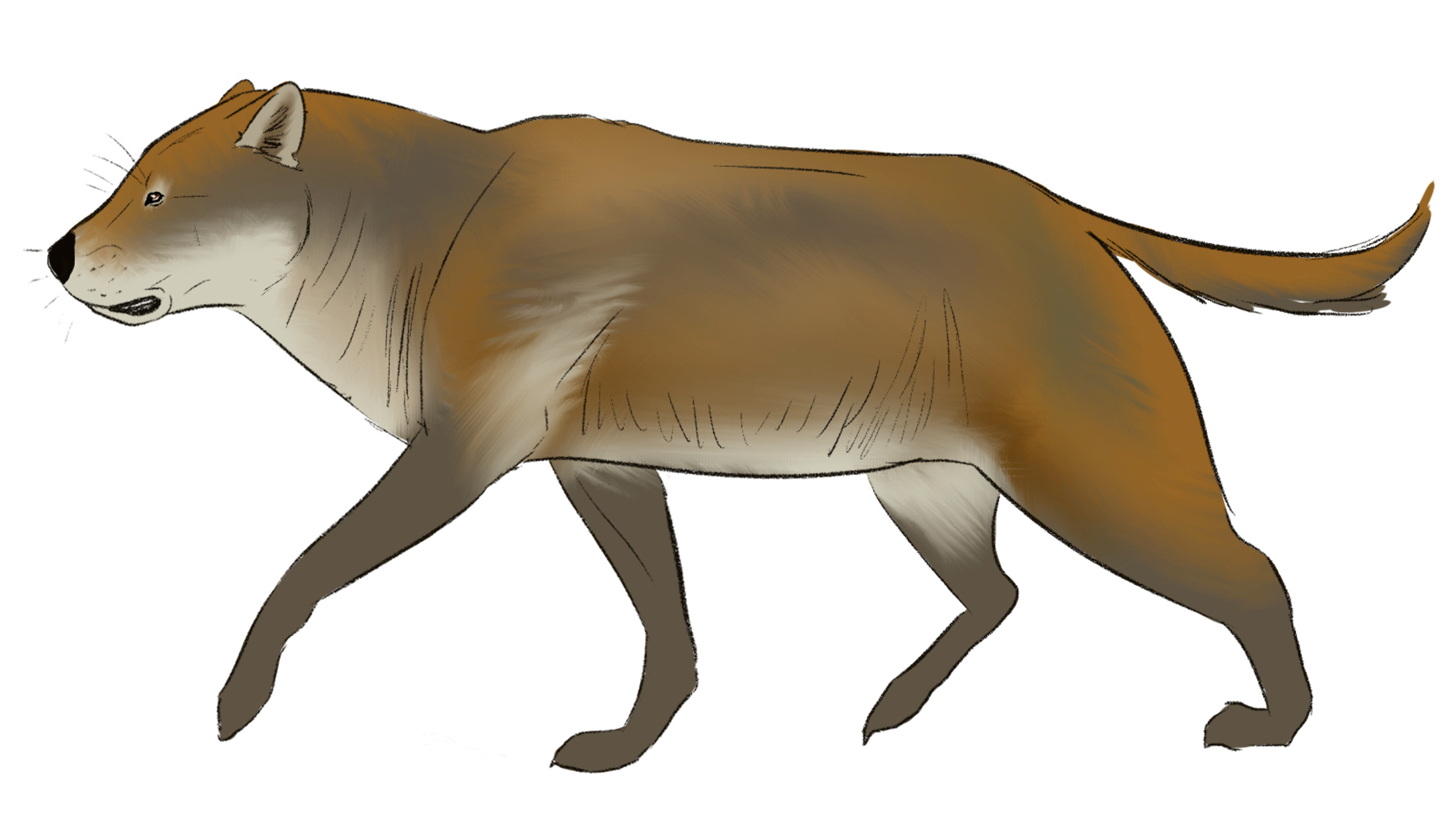|
Digitigrade
In terrestrial vertebrates, digitigrade ( ) locomotion is walking or running on the toes (from the Latin ''digitus'', 'finger', and ''gradior'', 'walk'). A digitigrade animal is one that stands or walks with its toes (phalanges) on the ground, and the rest of its foot lifted. Digitigrades include birds (what many see as bird's knees are actually ankles), cats, dogs, and many other mammals, but not plantigrades (such as humans) or Ungulate, unguligrades (such as horses). Digitigrades generally move more quickly than other animals. There are structural differences between the Limb (anatomy), limb anatomy of plantigrades, unguligrades, and digitigrades. Digitigrade and unguligrade animals have relatively long carpals and tarsus (skeleton), tarsals, and the bones which correspond to the human ankle are thus set much higher in the limb than in a human. In a digitigrade animal, this effectively lengthens the foot, so much so that what are often thought of as a digitigrade animal's "hands ... [...More Info...] [...Related Items...] OR: [Wikipedia] [Google] [Baidu] |
Plantigrade
151px, Portion of a human skeleton, showing plantigrade habit In terrestrial animals, plantigrade locomotion means walking with the toes and metatarsals flat on the ground. It is one of three forms of locomotion adopted by terrestrial mammals. The other options are digitigrade, walking on the toes and fingers with the heel and wrist permanently raised, and unguligrade, walking on the nail or nails of the toes (the hoof) with the heel/wrist and the digits permanently raised. The leg of a plantigrade mammal includes the bones of the upper leg (femur/humerus) and lower leg (tibia and fibula/radius and ulna). The leg of a digitigrade mammal also includes the metatarsals/metacarpals, the bones that in a human compose the arch of the foot and the palm of the hand. The leg of an unguligrade mammal also includes the phalanges, the finger and toe bones. Among extinct animals, most early mammals such as pantodonts were plantigrade. A plantigrade foot is the primitive condition ... [...More Info...] [...Related Items...] OR: [Wikipedia] [Google] [Baidu] |
Hyaenodonta
Hyaenodonta ("hyena teeth") is an extinct order of hypercarnivorous placental mammals of clade Pan-Carnivora from mirorder Ferae. Hyaenodonts were important mammalian predators that arose during the early Paleocene in Europe and persisted well into the late Miocene. Characteristics Hyaenodonts are characterized by long, often disproportionately large skulls, slender jaws, and slim bodies. They generally ranged in size from 30 to 140 cm at the shoulder. While '' Simbakubwa kutokaafrika'' may have been up to (surpassing the modern polar bear in size), this estimate is suspect due to being based on skull-body size ratios derived from felids, which have much smaller skulls for their body size. Other large hyaenodonts include two close and later-surviving relatives of ''Simbakubwa'', '' Hyainailouros'' and '' Megistotherium'' (the latter likely being the largest in the group), and the much earlier-living '' Hyaenodon gigas'' (the largest species from genus ''Hyaenodon'' ... [...More Info...] [...Related Items...] OR: [Wikipedia] [Google] [Baidu] |
Felidae
Felidae ( ) is the Family (biology), family of mammals in the Order (biology), order Carnivora colloquially referred to as cats. A member of this family is also called a felid ( ). The 41 extant taxon, extant Felidae species exhibit the greatest diversity in fur patterns of all terrestrial carnivores. Cats have retractile claws, slender muscular bodies and strong flexible forelimbs. Their teeth and facial muscles allow for a powerful bite. They are all obligate carnivores, and most are solitary predators ambushing or stalking their prey. Wild cats occur in Africa, Europe, Asia and the Americas. Some wild cat species are adapted to forest and savanna habitats, some to arid environments, and a few also to wetlands and mountainous terrain. Their activity patterns range from nocturnal and crepuscular to Diurnality, diurnal, depending on their preferred prey species. Reginald Innes Pocock divided the extant Felidae into three subfamilies: the Pantherinae, the Felinae and the Acin ... [...More Info...] [...Related Items...] OR: [Wikipedia] [Google] [Baidu] |
Mammal
A mammal () is a vertebrate animal of the Class (biology), class Mammalia (). Mammals are characterised by the presence of milk-producing mammary glands for feeding their young, a broad neocortex region of the brain, fur or hair, and three Evolution of mammalian auditory ossicles, middle ear bones. These characteristics distinguish them from reptiles and birds, from which their ancestors Genetic divergence, diverged in the Carboniferous Period over 300 million years ago. Around 6,640 Neontology#Extant taxon, extant species of mammals have been described and divided into 27 Order (biology), orders. The study of mammals is called mammalogy. The largest orders of mammals, by number of species, are the rodents, bats, and eulipotyphlans (including hedgehogs, Mole (animal), moles and shrews). The next three are the primates (including humans, monkeys and lemurs), the Artiodactyl, even-toed ungulates (including pigs, camels, and whales), and the Carnivora (including Felidae, ... [...More Info...] [...Related Items...] OR: [Wikipedia] [Google] [Baidu] |
Ungulate
Ungulates ( ) are members of the diverse clade Euungulata ("true ungulates"), which primarily consists of large mammals with Hoof, hooves. Once part of the clade "Ungulata" along with the clade Paenungulata, "Ungulata" has since been determined to be a polyphyletic and thereby invalid clade based on molecular data. As a result, true ungulates had since been reclassified to the newer clade Euungulata in 2001 within the clade Laurasiatheria while Paenungulata has been reclassified to a distant clade Afrotheria. Living ungulates are divided into two orders: Perissodactyla including Equidae, equines, rhinoceroses, and tapirs; and Artiodactyla including Bos, cattle, antelope, Sus (genus), pigs, giraffes, camels, Ovis, sheep, deer, and Hippopotamidae, hippopotamuses, among others. Cetaceans such as Whale, whales, Dolphin, dolphins, and Porpoise, porpoises are also classified as artiodactyls, although they do not have hooves. Most terrestrial ungulates use the hoofed tips of their toes ... [...More Info...] [...Related Items...] OR: [Wikipedia] [Google] [Baidu] |
Trucidocynodon
''Trucidocynodon'' is an extinct genus of ecteniniid cynodonts from the Upper Triassic (Carnian) of Brazil. It contains a single species, ''Trucidocynodon riograndensis''. Fossils of ''Trucidocynodon'' were discovered in outcrops of the Upper Santa Maria Formation in Paleorrota Geopark, Agudo. ''Trucidocynodon'' is one of the most completely known Triassic cynodonts, as its holotype is a nearly complete and fully articulated skeleton. Description ''T. riograndensis'' was a carnivorous cynodont closely related to '' Ecteninion lunensis'' and '' Diegocanis eleganus'', from the Upper Triassic Ischigualasto Formation of Argentina. It differed from other ecteniniids in several respects, including its larger size. The holotype skeleton has a skull around in length and a total body length of around . The holotype, UFRGS PV-1051-T, is accessioned at the Federal University of Rio Grande do Sul (UFRGS) alongside four paratypes based on postcranial fossils. A second skull was desc ... [...More Info...] [...Related Items...] OR: [Wikipedia] [Google] [Baidu] |
Elephants
Elephants are the Largest and heaviest animals, largest living land animals. Three living species are currently recognised: the African bush elephant (''Loxodonta africana''), the African forest elephant (''L. cyclotis''), and the Asian elephant (''Elephas maximus''). They are the only surviving members of the Family (biology), family Elephantidae and the Order (biology), order Proboscidea; extinct relatives include mammoths and mastodons. Distinctive features of elephants include a long proboscis called a trunk, tusks, large ear flaps, pillar-like legs, and tough but sensitive grey skin. The trunk is Prehensility, prehensile, bringing food and water to the mouth and grasping objects. Tusks, which are derived from the incisor teeth, serve both as weapons and as tools for moving objects and digging. The large ear flaps assist in maintaining a constant body temperature as well as in communication. African elephants have larger ears and concave backs, whereas Asian elephants hav ... [...More Info...] [...Related Items...] OR: [Wikipedia] [Google] [Baidu] |
Canidae
Canidae (; from Latin, ''canis'', "dog") is a family (biology), biological family of caniform carnivorans, constituting a clade. A member of this family is also called a canid (). The family includes three subfamily, subfamilies: the Caninae, and the extinct Borophaginae and Hesperocyoninae. The Caninae are known as canines, and include Dog, domestic dogs, Wolf, wolves, coyotes, raccoon dogs, Fox, foxes, jackals and other species. Canids are found on all continents except Antarctica, having arrived independently or accompanied by Human, human beings over extended periods of time. Canids vary in size from the gray wolf to the fennec fox. The body forms of canids are similar, typically having long muzzles, upright ears, teeth adapted for cracking bones and slicing flesh, long legs, and bushy tails. They are mostly social animals, living together in family units or small groups and behaving co-operatively. Typically, only the dominant pair in a group breeds and a litter of young ... [...More Info...] [...Related Items...] OR: [Wikipedia] [Google] [Baidu] |
Thylacine
The thylacine (; binomial name ''Thylacinus cynocephalus''), also commonly known as the Tasmanian tiger or Tasmanian wolf, was a carnivorous marsupial that was native to the Mainland Australia, Australian mainland and the islands of Tasmania and New Guinea. The thylacine died out in New Guinea and mainland Australia around 3,600–3,200 years ago, prior to the arrival of Europeans, possibly because of the introduction of the dingo, whose earliest record dates to around the same time, but which never reached Tasmania. Prior to European settlement, around 5,000 remained in the wild on the island of Tasmania. Beginning in the nineteenth century, they were perceived as a threat to the livestock of farmers and bounty (reward), bounty hunting was introduced. The last known of its species died in 1936 at Hobart Zoo in Tasmania. The thylacine is widespread in popular culture and is a cultural icon in Australia. The thylacine was known as the Tasmanian tiger because of the dark trans ... [...More Info...] [...Related Items...] OR: [Wikipedia] [Google] [Baidu] |
Hyena
Hyenas or hyaenas ( ; from Ancient Greek , ) are feliform carnivoran mammals belonging to the family Hyaenidae (). With just four extant species (each in its own genus), it is the fifth-smallest family in the order Carnivora and one of the smallest in the class Mammalia. Despite their low diversity, hyenas are unique and vital components of most African ecosystems. Although phylogenetically closer to felines and viverrids, hyenas are behaviourally and morphologically similar to canids in several elements due to convergent evolution: both hyenas and canines are non-arboreal, cursorial hunters that catch prey with their teeth rather than claws. Both eat food quickly and may store it, and their calloused feet with large, blunt, nonretractable claws are adapted for running and making sharp turns. However, hyenas' grooming, scent marking, defecation habits, mating, and parental behavior are consistent with the behavior of other feliforms. Hyenas feature prominently in the fo ... [...More Info...] [...Related Items...] OR: [Wikipedia] [Google] [Baidu] |
Pakicetus
''Pakicetus'' (meaning 'whale from Pakistan') is an extinct genus of amphibious cetacean of the family Pakicetidae, which was endemic to the Indian Subcontinent during the Ypresian (early Eocene) period, about 50 million years ago. It was a wolf-like mammal, about long, and lived in and around water where it ate fish and other animals. The name Pakicetus comes from the fact that the first fossils of this extinct amphibious whale were discovered in Pakistan. The vast majority of paleontologists regard it as the most basal whale, representing a transitional stage between land mammals and whales. It belongs to the even-toed ungulates with the closest living non-cetacean relative being the hippopotamus. Description Based on the sizes of specimens, and to a lesser extent on composite skeletons, species of ''Pakicetus'' are thought to have been to in length. ''Pakicetus'' looked very different from modern cetaceans, and its body shape more resembled those of land-dwelling h ... [...More Info...] [...Related Items...] OR: [Wikipedia] [Google] [Baidu] |
Indohyus
''Indohyus'' (Meaning "India's pig" from the Greek words ''Indos'', "from India" and ''hûs'', "pig") is an extinct genus of artiodactyl known from Eocene fossils in Asia. This small chevrotain-like animal found in the Himalayas is among the closest known non-cetacean relatives of whales. Discovery The fossils were discovered among rocks that had been collected in 1971 in Kashmir by the Indian geologist A. Ranga Rao who found a few teeth and parts of a jawbone; when he died, however, many rocks had yet to be broken open. Ranga Rao's widow gave the rocks to Hans Thewissen, who was working on them. When his technician accidentally broke one of the skulls they had found, Thewissen recognised the ear structure of the auditory bulla, formed from the ectotympanic bone in a shape which is highly distinctive, found only in the skulls of cetaceans both living and extinct, including '' Pakicetus''. Paleobiology About the size of a fox, this omnivorous pig-like creature shared some ... [...More Info...] [...Related Items...] OR: [Wikipedia] [Google] [Baidu] |







